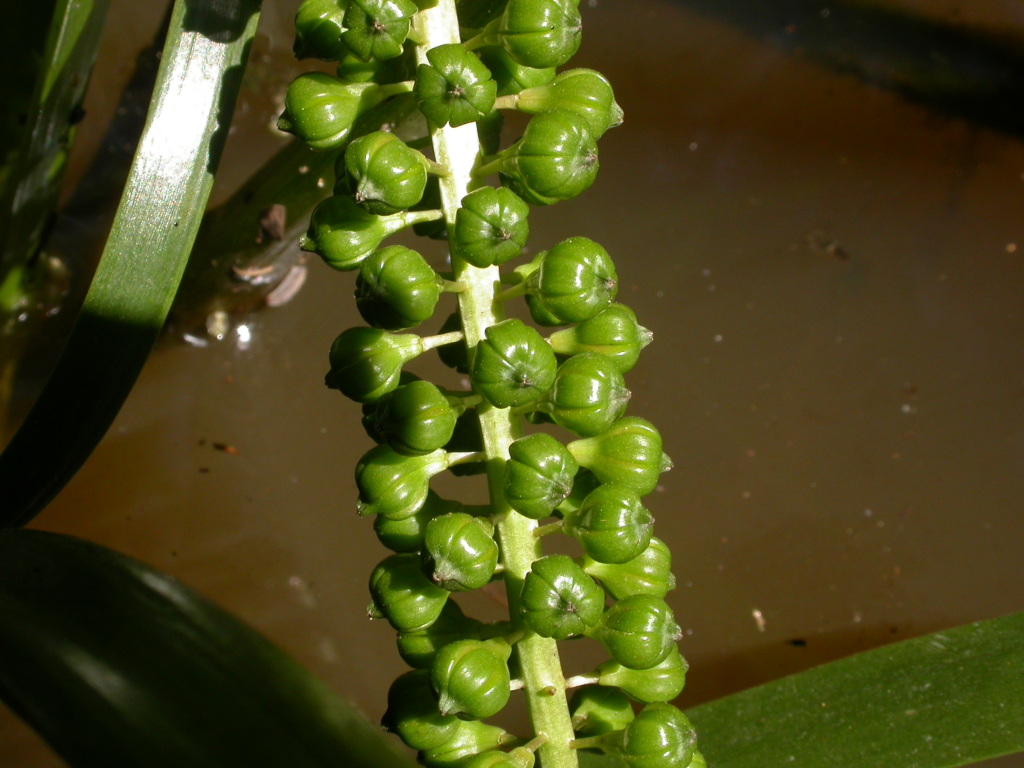Juncaginaceae
Annual or perennial herbs of damp to very wet, freshwater or saline areas, or emergent aquatic herbs; rhizomes often present. Leaves usually all basal, erect or floating; leaf-sheath open, often with ligule present. Inflorescence racemose, often appearing spike-like. Flowers small and usually inconspicuous, bisexual or unisexual; perianth usually with 2 whorls, each of 3 similar segments, less commonly 0, 1, 2 or 4 segments per whorl; stamens mostly 6, less commonly 1, 3, 4 or 8; filaments short, each united to the base of a perianth part; anthers 2-locular, each covered by a perianth part; carpels usually 6, less often 3 or 4 (in Triglochin scilloides the single unilocular ovary is probably 3-carpellate), or irregularly 2–8; stigma mostly sessile or on a short style, except female flowers of T. scilloides with an elongate thread-like style; ovules solitary in each locule or carpel. Fruit a dry achene (T. scilloides) or each fertile carpel mostly follicle-like and opening ventrally or indehiscent.
About 29 species in 3 genera, widespread in temperate and cold regions of the world. Juncaginaceae is not monophyletic and is likely to undergo revision in the future (Von Mering & Kadereit 2010).
Conn, B.J.; Aston, H.I. (1994). Juncaginaceae. In: Walsh, N.G.; Entwisle, T.J., Flora of Victoria Vol. 2, Ferns and Allied Plants, Conifers and Monocotyledons, pp. 137–146. Inkata Press, Melbourne.
 Spinning
Spinning


